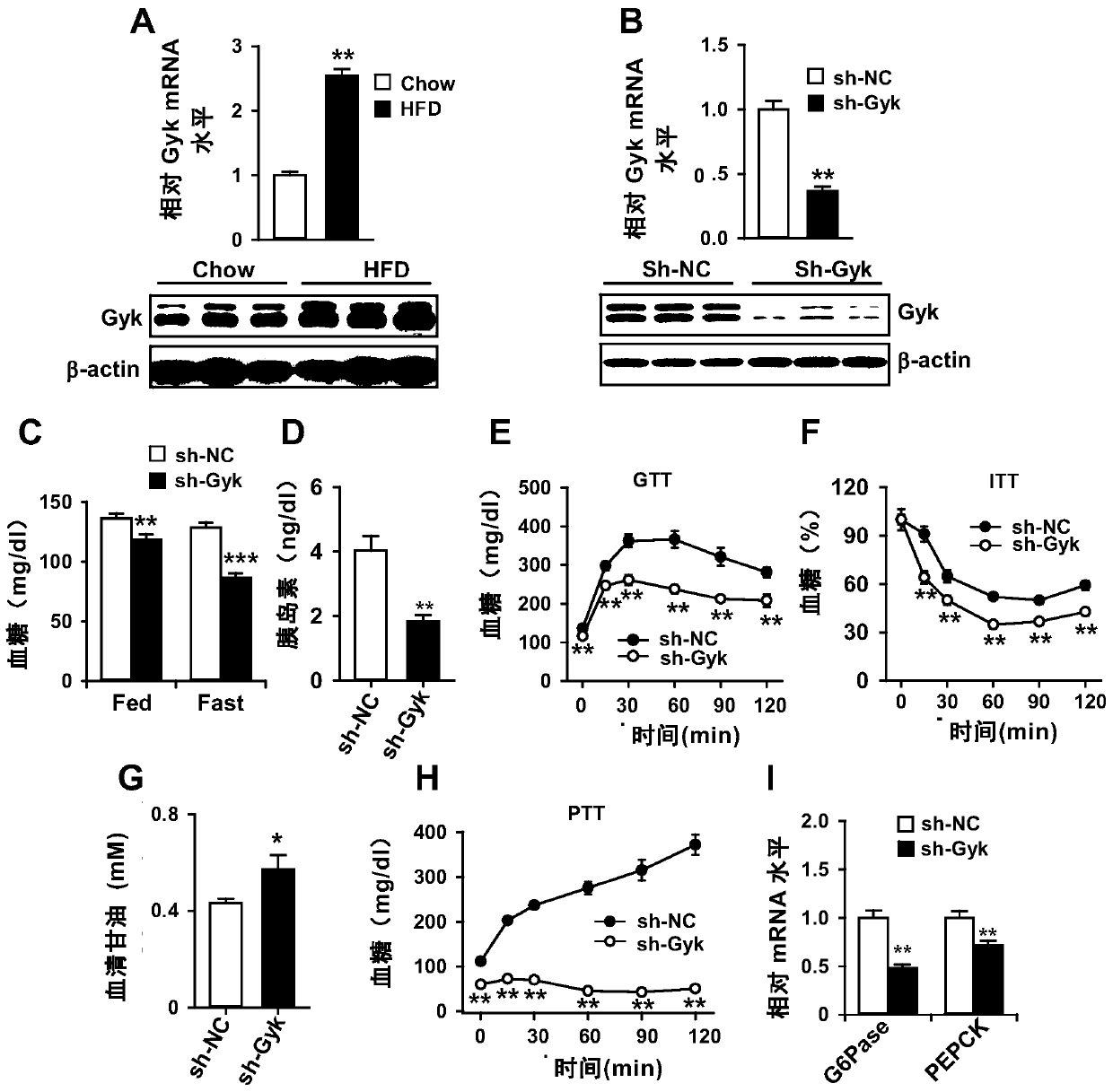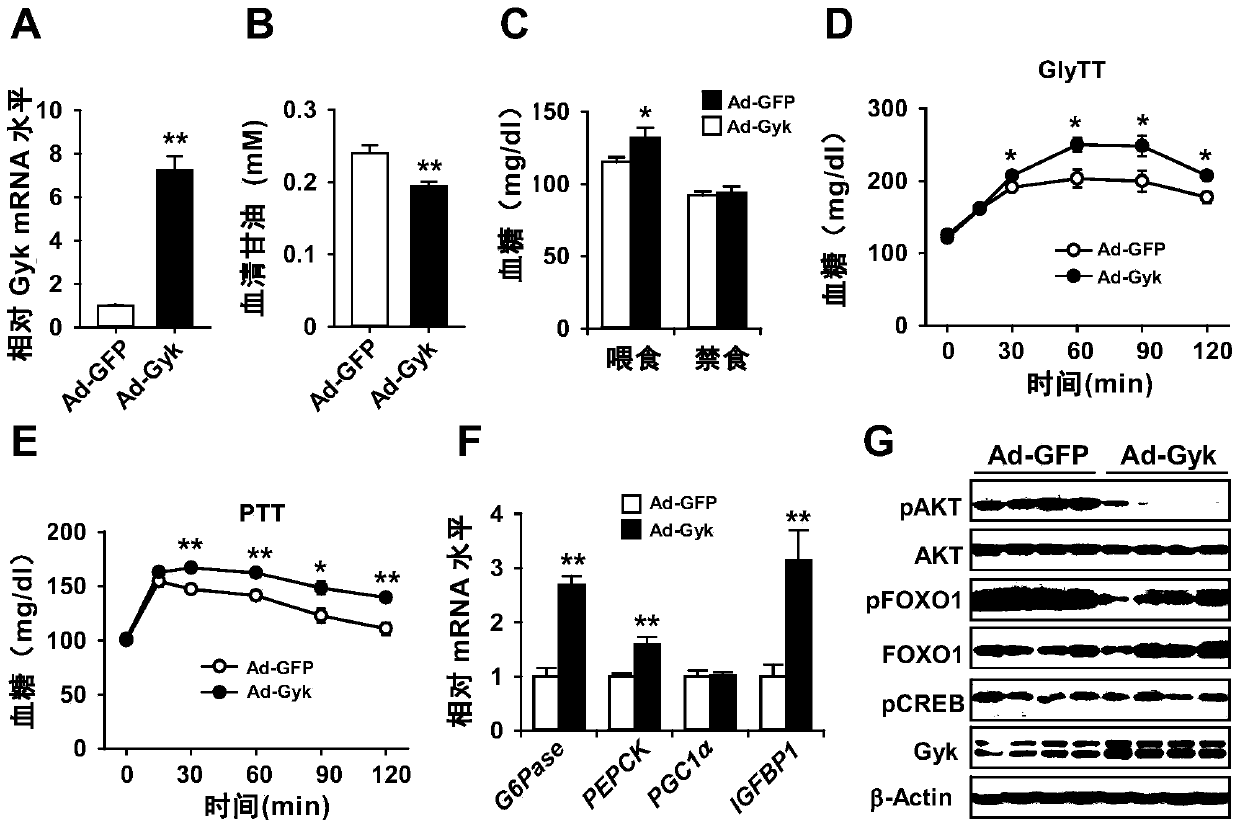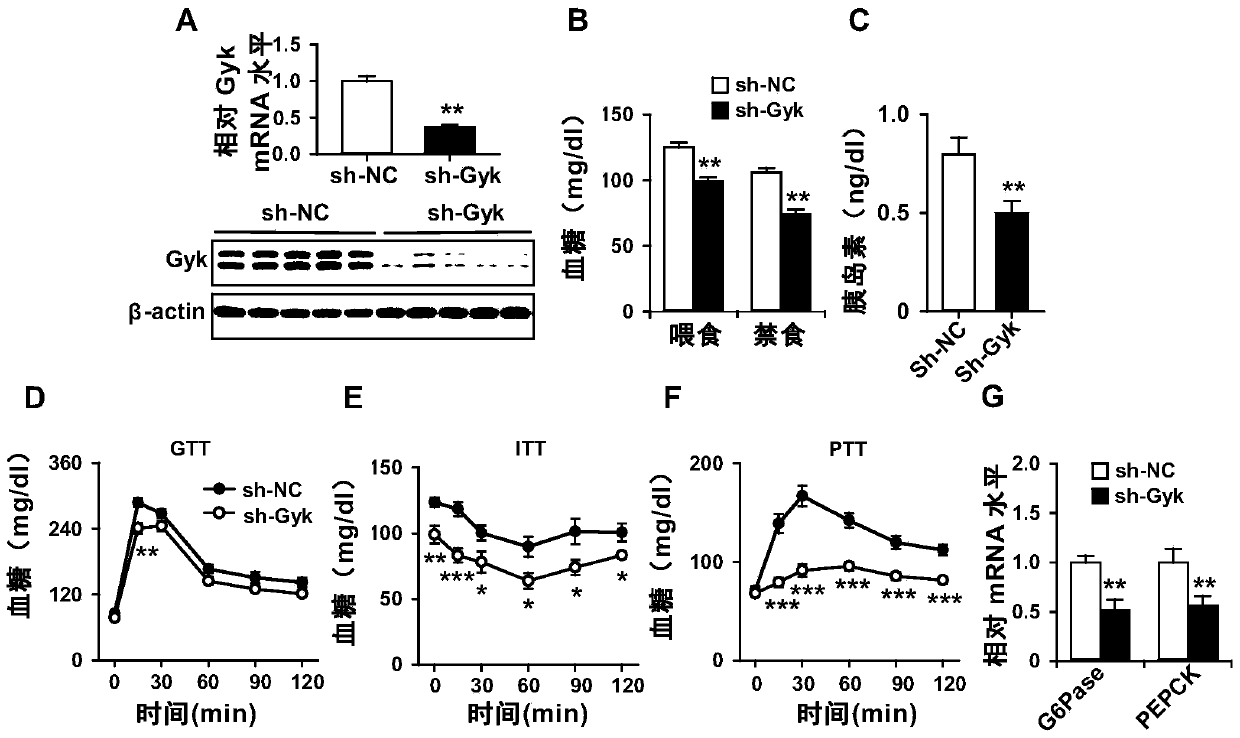Use of glycerol kinase as a therapeutic target for disorders of glucose metabolism
A technology of glycerol kinase and uses, which is applied in the field of glycerol kinase as a therapeutic target for disorders of glucose metabolism, and can solve problems such as no report on the effect of glycerol kinase
- Summary
- Abstract
- Description
- Claims
- Application Information
AI Technical Summary
Problems solved by technology
Method used
Image
Examples
Embodiment 1
[0107] Example 1. The expression of glycerol kinase in the liver of diabetic model mice increases, and inhibiting the expression of glycerol kinase can significantly improve the hyperglycemia and insulin sensitivity of mice
[0108] Glycerol kinase is involved in gluconeogenesis by catalyzing glycerol to 3-phosphate glycerol. Glycerol kinase is mainly expressed in the liver, followed by the kidney, with a small amount expressed in adipose tissue and skeletal muscle. The inventors found in the diabetic mouse model induced by high-fat diet that the expression of glycerol kinase (glycerol kinase, Gyk) in the liver was significantly higher than that of mice fed with control diet ( figure 1 A).
[0109] The inventors used adenovirus-mediated RNA interference to inhibit the expression of Gyk in the liver of diabetic model mice ( figure 1 B). It was found that after RNA interference Gyk expression, can significantly reduce the blood glucose and fasting blood glucose ( figure 1 C)...
Embodiment 2
[0114] Example 2. Glycerol kinase regulates gluconeogenesis and blood glucose homeostasis by regulating glycerol metabolism and AKT-FOXO1-mediated gluconeogenesis gene expression
[0115]In this example, the function and mechanism of Gyk in liver gluconeogenesis and blood glucose homeostasis were explored in normal mice.
[0116] 1. The effect of overexpression of Gyk
[0117] The present inventors utilized adenovirus-mediated overexpression of Gyk in the liver of normal mice ( figure 2 A), a significant decrease in blood glycerol concentration was found ( figure 2 B), the increase of blood glucose when the mice were free to eat ( figure 2 C), gluconeogenesis with glycerol as precursor was significantly enhanced ( figure 2 D). These results indicated that Gyk regulates gluconeogenesis by regulating glycerol metabolism at the overall level, confirming the role of Gyk in regulating gluconeogenesis with glycerol as precursor.
[0118] Pyruvate tolerance experiments showe...
Embodiment 3
[0128] Embodiment 3, drug screening
[0129] 1. Drug screening with cells expressing glycerol kinase
[0130] Primary cultured hepatocytes from mice can express glycerol kinase endogenously. The cell is used as a cell model for screening, improving or treating disorders of glucose metabolism.
PUM
 Login to View More
Login to View More Abstract
Description
Claims
Application Information
 Login to View More
Login to View More - R&D
- Intellectual Property
- Life Sciences
- Materials
- Tech Scout
- Unparalleled Data Quality
- Higher Quality Content
- 60% Fewer Hallucinations
Browse by: Latest US Patents, China's latest patents, Technical Efficacy Thesaurus, Application Domain, Technology Topic, Popular Technical Reports.
© 2025 PatSnap. All rights reserved.Legal|Privacy policy|Modern Slavery Act Transparency Statement|Sitemap|About US| Contact US: help@patsnap.com



